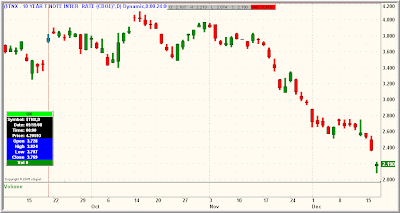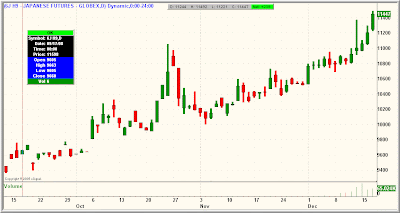


It seems as though the post on competitive devaluation of the U.S. dollar was a bit more timely than even I expected. Ten year Treasury rates have absolutely collapsed (top chart) in the wake of announced Fed policy. As a result, the euro (middle chart) has soared about 10% versus the dollar in the past five trading sessions alone. The yen (bottom chart) is now trading at 13+ year highs versus the dollar. Gold, meanwhile, is trading at its highest level since early October.
In the wake of these events, I talked with a bank president yesterday, who was unusually candid. His bank was lowering its CD rates because it didn't need to attract more capital. Why? It is difficult to find creditworthy lending projects. The bank isn't keen to lend money for real estate-related loans, and the business climate is hardly looking good for expansion.
As Mish points out, banks can borrow money essential for free from the Fed and simply stash it at higher interest rates further out on the yield curve. Making money cheaper doesn't necessarily increasing the incentives for banks to lend. Meanwhile, I talked with representatives from two large brokerage firms, both of whom confirmed that their inventory of longer-term certificates of deposit (more than 3 years) had been completely bought out.
Retirees are going to be facing an interesting dilemma in 2009: accept government guarantees with Treasuries, CDs, etc. and face paltry yields or accept greater risk as well as return in the corporate and municipal bond markets. I notice we had a good pop in price for investment grade corporates (LQD) and municipals (TFI) today; perhaps those yields are looking jucier in a zero interest rate world. Of course, all those returns are denominated in U.S. dollars and, hidden to average investors, is the dollar devaluation of their accounts in the past week.
.




